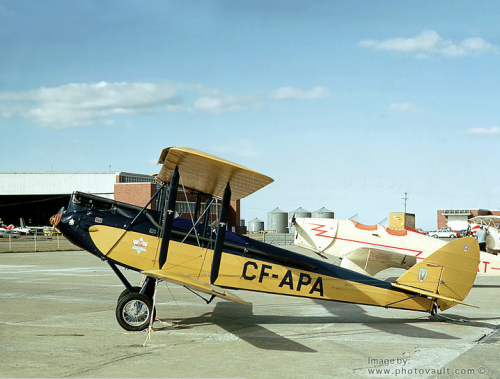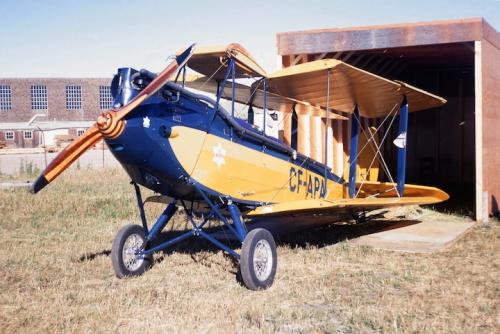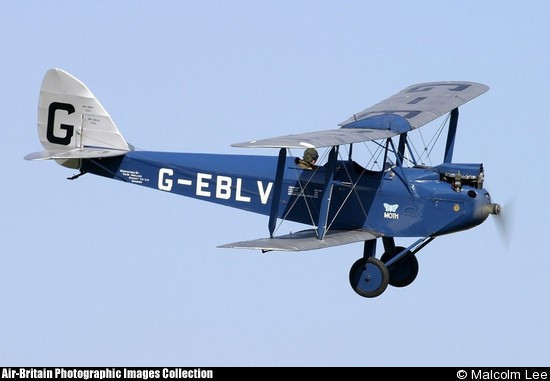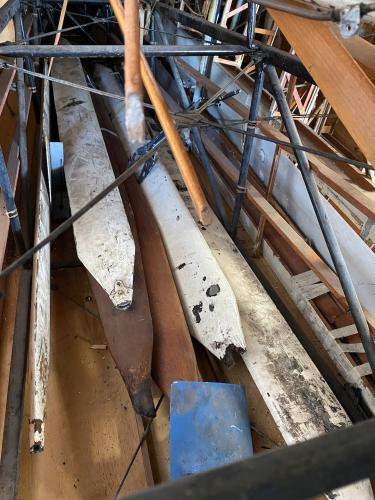de Havilland DH 60 Moth

The first flight of the Cirrus powered prototype DH 60 Moth was carried out by Geoffrey de Havilland at the works airfield at Stag Lane in 1925. The Moth was a two-seat biplane of wooden construction, with a plywood covered fuselage and fabric covered surfaces. A useful feature of the design was its folding wings which allowed owners to hangar the aircraft in much smaller spaces.
Although the Cirrus engine was reliable, its manufacturer was not. It depended on components salvaged from World War I-era Renault engines. Therefore, de Havilland decided to replace the Cirrus with a new engine built by his own factory. In 1928 when the new de Havilland Gipsy I engine was available a company DH 60 Moth was re-engined as the prototype of the DH 60G Gipsy Moth.
Next to the increase in power, the main advantage of this update was that the Gipsy was a completely new engine available in as great a number as the manufacture of Moths necessitated. The new Gipsy engines could simply be built in-house on a production line side by side with the production line for Moth airframes. This also enabled the de Havilland Aircraft Company to control the complete process of building a Moth airframe, engine and all, streamline productivity and in the end lower manufacturing costs.
The Moth fuselage was a plywood box, built around spruce longerons, protected on the inside by varnish and on the outside by a layer of doped fabric. However, by 1927 problems were noted in Canada with shrinking of the wooden structure holding the engine. This problem was solved by making the fuselage of welded steel tubing faired with wooden stringers and covered with doped fabric. This model, the DH 60M, and known as the ‘Metal Moth’ arrived in Canada late in 1928.
In 1931 with the upgrade of the Gipsy engine as the Gipsy II, de Havilland inverted the engine and re-designated it the Gipsy III. The engine was fitted into a Moth aircraft and was re-designated the DH 60GIII Moth Major. The DH 60T was re-engined with the Gipsy III and was re-designated the DH 60T Tiger Moth. The DH 60T Tiger Moth was modified with swept back mainplanes, the cabane struts were also moved forward to improve egress from the front cockpit in case of emergency. The changes were considered great enough that the aircraft was re-designated the de Havilland DH 82 Tiger Moth. (Source: Wikipedia, revised)
Technical Details:



The container with the stored remains of CF-APA was examined recently. It is still on the Museum's list of restorations, pending expertise, workshop space and funding.
